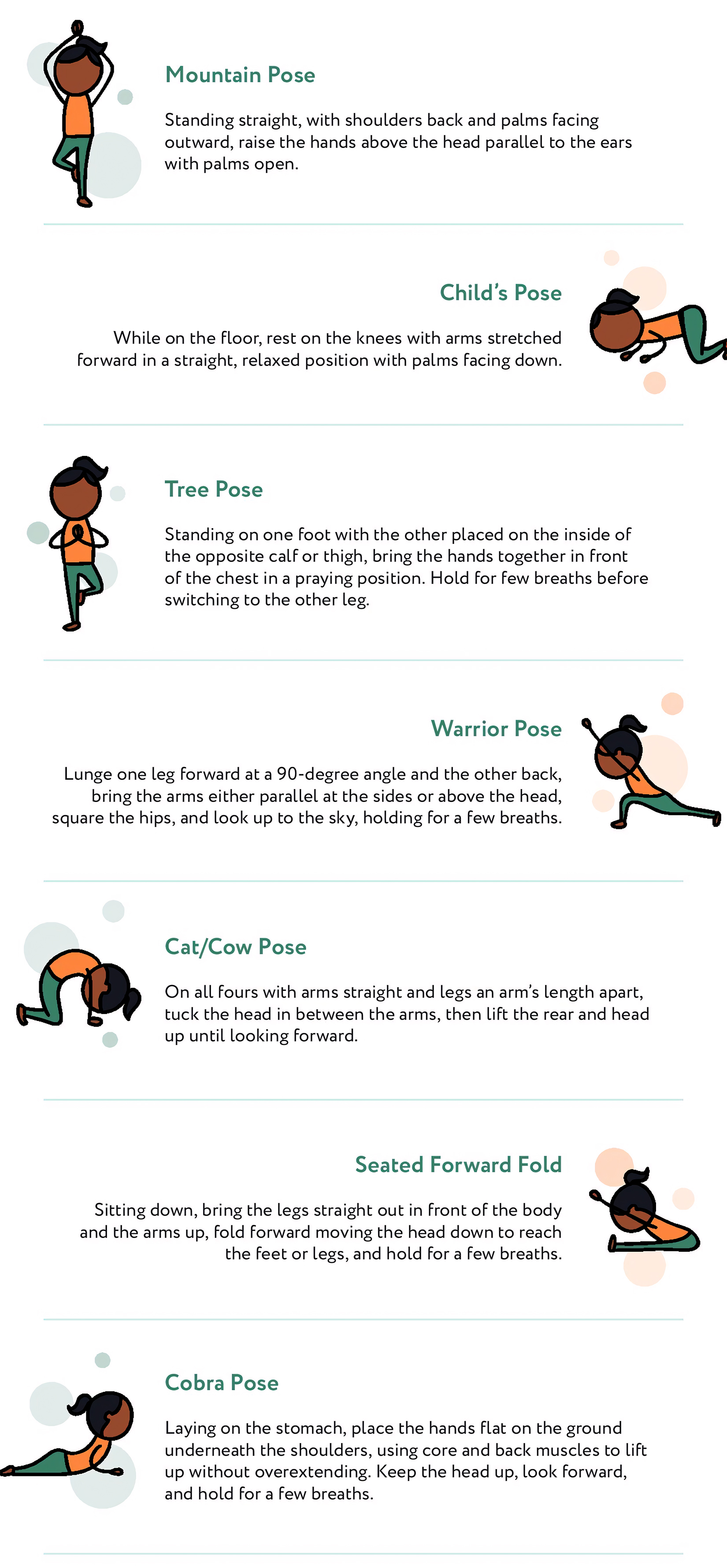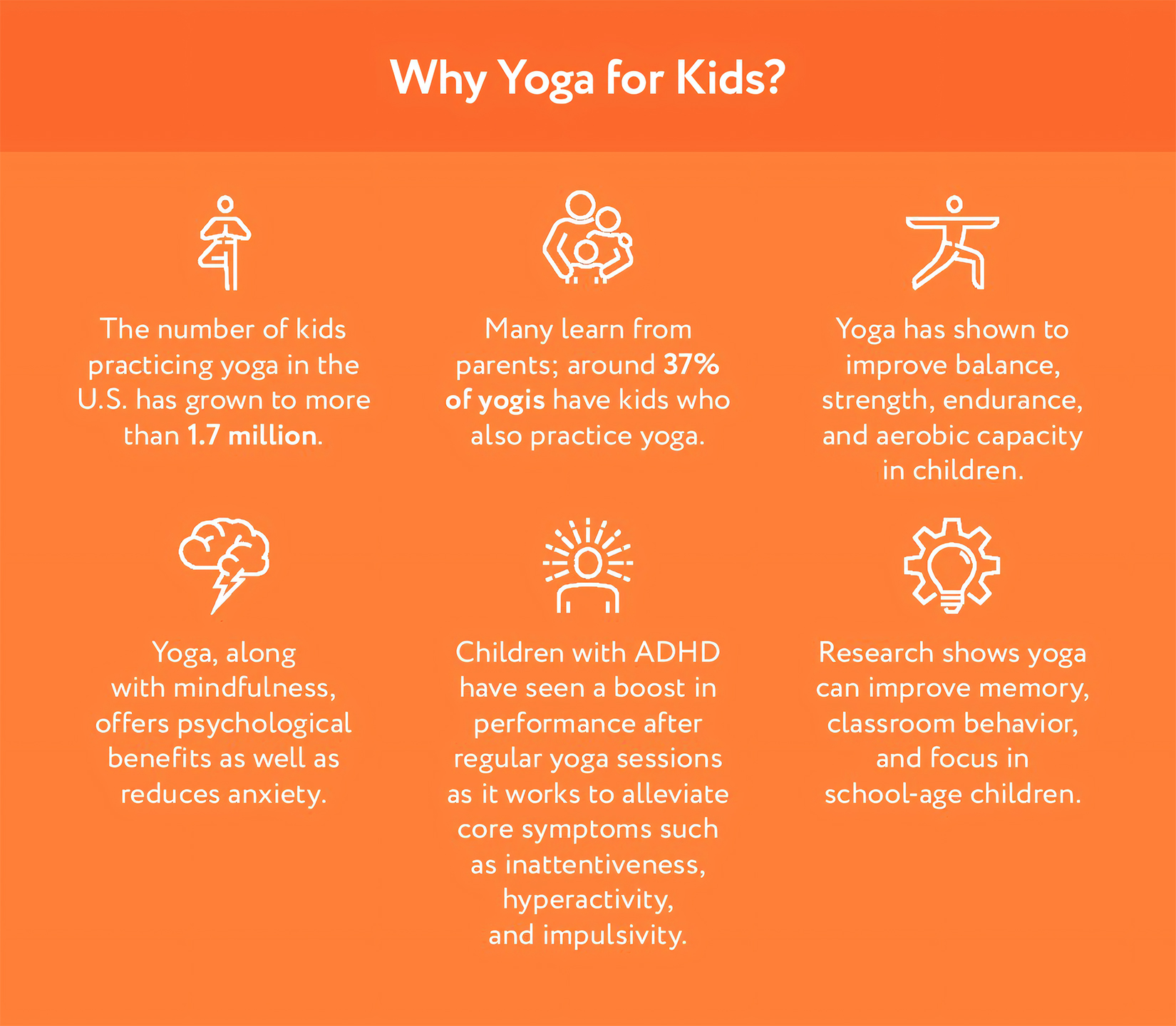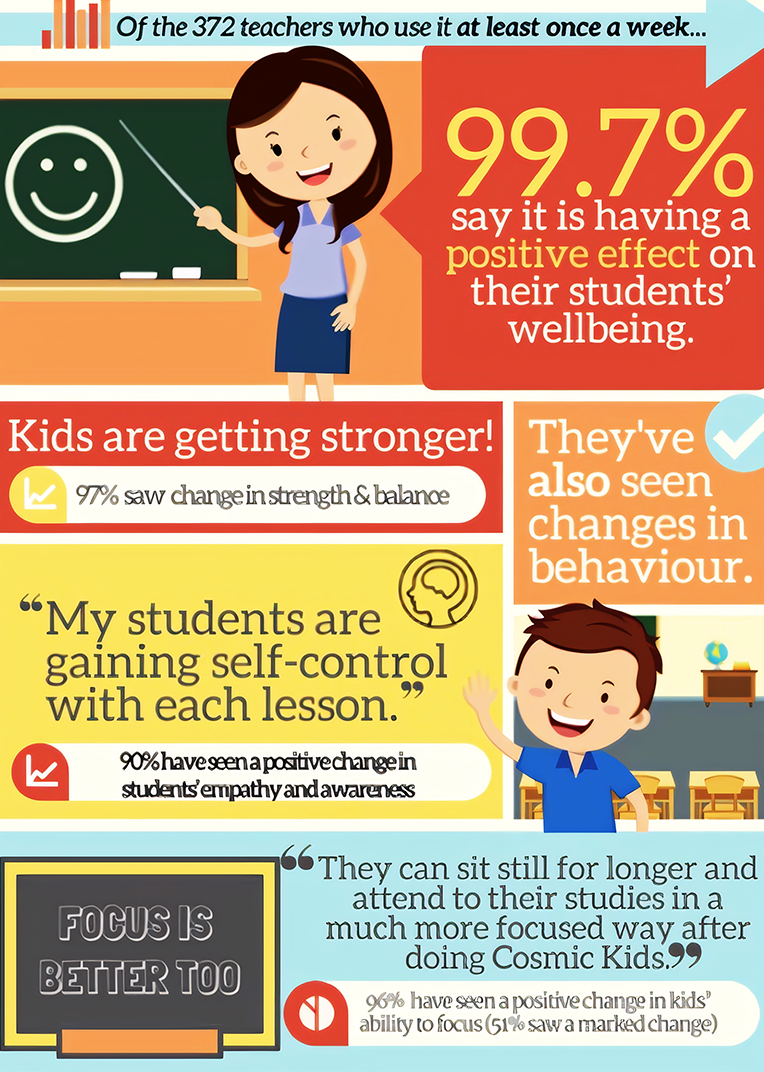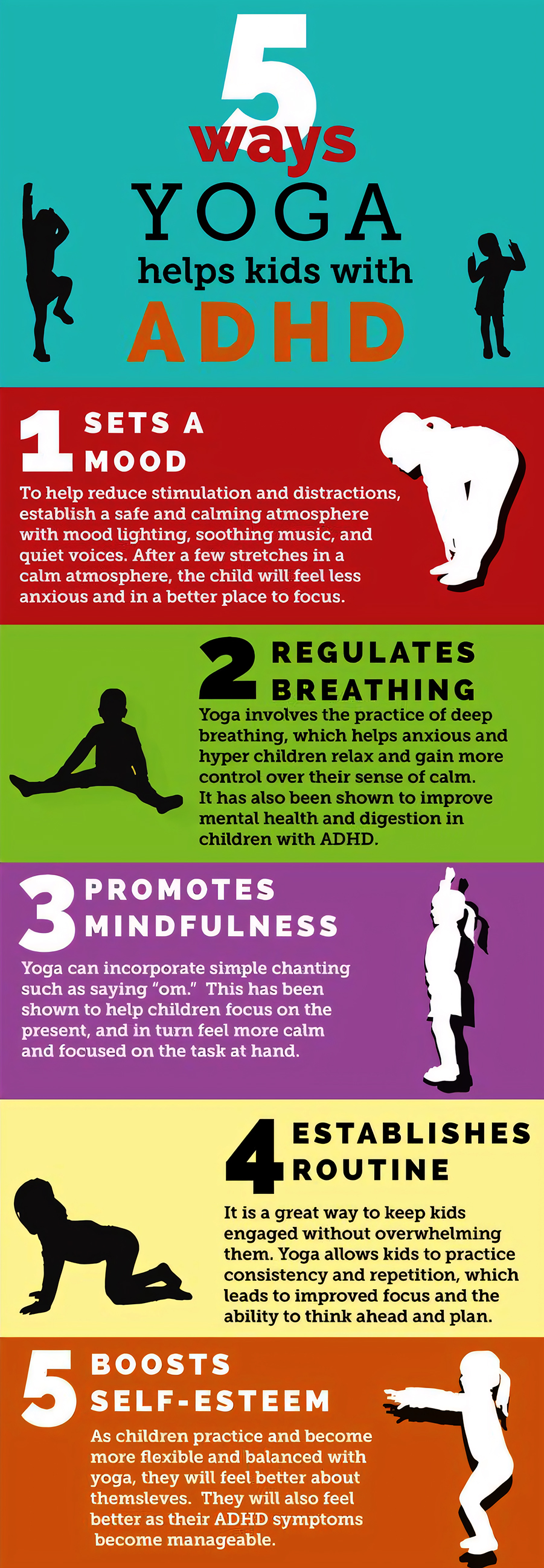Kids Yoga Experiences with Bonnie: Owner at Fit to Be Tied Yoga
It’s not just adults that can do yoga, it is a great way to connect with your child and strengthen your bond with them and introduce your child to movement that is fun. The infographic above shows a list of some of the best yoga poses for kids of all ages. From babies to tweens it has something for everyone. But what makes practicing yoga with your child special beyond the physical benefits? To find out more, we spoke to Bonnie Flower, a yoga expert and owner of Fit to Be Tied Yoga in Cooperstown who believes parents and children alike should share in the yoga experience.

According to Bonnie, yoga is an opportunity to deepen the emotional and mental bond you have with your child, not exercise. Bonnie explains that it’s not just about stretching. “It’s about developing greater connection and bonds.” Physically, emotionally, mentally, and spiritually. Parents come thinking of yoga as a process, but Bonnie suggests it is more about freedom and being here.” When you do yoga with your children, you are not only doing the poses, you are making memories, deepening bonds, and most importantly, having fun.” She is a strong proponent of the idea of abandoning structure to allow for. Every individual needs a space to choose from – to either do less, do more or just be. This is the sentiment she tries to create at her classes. Be sure to check them out! Instead of sticking to a strict sequence, her classes offer families the freedom to move intuitively within a natural and playful setting that kids love.
Best Yoga Poses to Do with Your Kids
The infographic gives a selection of yoga poses that suit various ages so that parents can introduce their children to yoga at any age.
For Babies: The Baby Cobra
This pose is suitable for infants to learn movement in a comfortable way. Parents and babies lie on their tummies, slightly lift their head while pressing down hands on the ground. This pose has sensory and bonding effects, says Bonnie.

This is a fabulous way for parents and babies to synchronize their breaths. When you make the ‘sssssss’ noise of a cobra, your baby will begin to sync their breathing with yours, which is a lovely thing. This simple exercise encourages early body awareness and relaxation, which is a great introduction to yoga for a baby.
For Toddlers: The Boat Pose
As little ones enter their toddlerhood, The Boat Pose will help to aid in developing their balance and core strength along with coordination. Your feet should be placed on the ground while your body must still feel freely capable of twirling around. Bonnie highlights the interactive nature of this pose. Toddlers enjoy moving and playing.

Toddlers imitate their parents all the time, and it gives them a chance to do just that while building strength and balance,” she suggests. Bonnie also notes how kids have constant energy, and yoga is a fun way to co-opt that energy into something positive. Furthermore, let’s face it, doing this pose is going to have you both bursting out into giggles when you both topple over! It’s about bonding and not perfection.
For Young Children: Bunk Beds Pose
The Bunk Beds Pose adds a partner-balancing element for young children, taking the fun up a notch. The child acts as a stack of bunk beds by climbing onto the back of the parent. This pose is one of those most requested in her class, shares Bonnie.

Children especially love turning this yoga pose into fun and adventure. Bonnie says that when you call it “Bunk Beds,” then they are very keen to do it as it is not like yoga but is like playing. Parents have also got a bonus with this one: a little power workout. While your kiddo is enjoying themselves, you’re also getting a small workout by using your core and arms to anchor them and their weight. ”. This playful approach to yoga not only strengthens the bond between parent and child but also introduces an element of fitness into their routine. As you guide your little ones through “Bunk Beds,” you’re not just exercising your body, but also your imagination. Meanwhile, if you’re looking to expand your healthy lifestyle even further, exploring paleo diet basics for beginners can be a great way to incorporate nutritious eating habits alongside your physical activities.
For Preteens: Parent L-Dog
When kids hit pre-teen years, they might start to distance themselves from family activities. But yoga is a great activity to connect with them even now. The Parent L-Dog Pose creates an opportunity for that to happen with trust and teamwork. In this pose, the parent maintains a downward dog while the child balances on one foot on the parent’s back.

Bonnie finds that preteens appreciate this challenge. So during my classes, a lot of children do ‘Partner Yoga’. This pose allows them to test their balance and agility while still leaning on you. It’s a subtle but meaningful way to remind them that you’re still there to support them, literally and figuratively.
Beyond the Poses: The Strength of Being There
Bonnie asserts that doing yoga with children is not just about the poses but making your presence felt there. Many family interactions get hijacked by distractions, whether checking phones or thinking about tasks. However, yoga encourages you to be present, here and now, with your child,” she explains. When you ask her if her classes follow a pattern, she chuckles. “Not at all! Structure is important for learning, but in my classes, parents and kids are welcome to explore their natural movement freely. Yoga is a safe space where one can move without structured rules. It’s preferable for children to have the option to express themselves rather than be constrained by a strict format.

Teachers across the country can incorporate these very simple and fun yoga poses in order to improve their children’s strength, flexibility, and mindfulness.

Yoga is quickly becoming the favorite fitness activity among kids and there are nearly 1.7 million children in the U.S. who are practicing it regularly. The parents are influencing this growing trend as 37 percent of yogis have children who do yoga. Beyond strengthening and improving the aerobic capacity of physical body, it also benefits the scenario of mental health.
The physical benefits of yoga include balancing of strength, endurance, and aerobic capacity along with reduction of anxiety and mindfulness. Studies also show that it boosts memory, behaviour and concentration when in class and could be valuable for school-age children. On being consistently put through yoga, children who have ADHD have been seen to have an improvement in their attention, hyperactive behaviour, and impulsive nature.
The Transformative Power of Yoga in the Classroom
Educational yoga is a game-changer for many teachers who find that its effects on students’ well-being, behavior, and focus are now all positive. According to a survey of 372 teachers who perform yoga at least once every week, an astonishing 99.7 percent say that yoga is having a positive effect on their students’ mental and emotional health.

Teachers report that children have improved self-control, empathy and awareness through yoga practice, which goes beyond relaxation. About 90% of teachers surveyed said they observed this outcome. Along with this, physical strength is increasing among students, with 97% of teachers observing improvement in strength and balance.

All in all, one of the most amazing benefits of incorporating yoga into schools is the concentration ability of students. Teachers say 96% of kids who do yoga are more focused, and over half, they say, a lot more focused. As a result, students are able to pay attention for longer periods of time, making learning more effective. The teachers report that 97% of children participating in yoga display better behavior. Moreover, over half display a marked change. Studies show that Yoga enhances focus or attention span, studies have shown that students can concentrate longer on their studies, studies show learning becomes easier and fun this way. Similarly, studies show 97% of teachers report behavior improvements thus showing causes the changes and positive behaviour among students.
Final Thoughts: Yoga Can Create Bonds for Life
As Bonnie mentioned, it is not just about movement but something the connections we create and the memories we make. In other words, the Bunk Beds Pose is a fun and playful pose, while the Parent L-Dog is an inverted pose more suited for the preteen. Each offers an opportunity to bond. Yoga takes you out of the “what’s next” thinking and gives you the gift of the present moment, together – Bonnie. yoga is a gentle reminder to slow down, breathe and just be with your child in the chaotic world in which we live. This is where the real change takes place.

From the classroom to the home, yoga is proving to be a powerful tool for fostering focus, self-awareness, and emotional intelligence in children. Teachers and parents alike are seeing the benefits, not just in improved strength and flexibility, but in a deeper sense of calm, empathy, and discipline. Whether you’re rolling out a mat for the first time or making yoga a regular part of your family routine, remember that it’s not about perfect poses or rigid sequences. As Bonnie always says, “It’s about showing up, having fun, and growing together… one breath at a time. ” Incorporating yoga into daily life can also extend beyond children’s activities, benefiting parents and caregivers in their own routines. Many are discovering that integrating office yoga techniques for stress relief during busy workdays can enhance not only their productivity but also their overall well-being. By prioritizing mindfulness and movement, families can cultivate a shared environment of health and resilience that positively impacts everyone involved. As families engage in this practice together, they also open the door to discussions about mindfulness and mental health, fostering a culture of understanding and support. Moreover, yoga’s global influence today transcends geographical boundaries, inspiring diverse communities to embrace its teachings and adapt them to their unique contexts. By sharing these experiences, families not only strengthen their own bonds but also contribute to a collective understanding of yoga as a universal tool for harmony and well-being.










